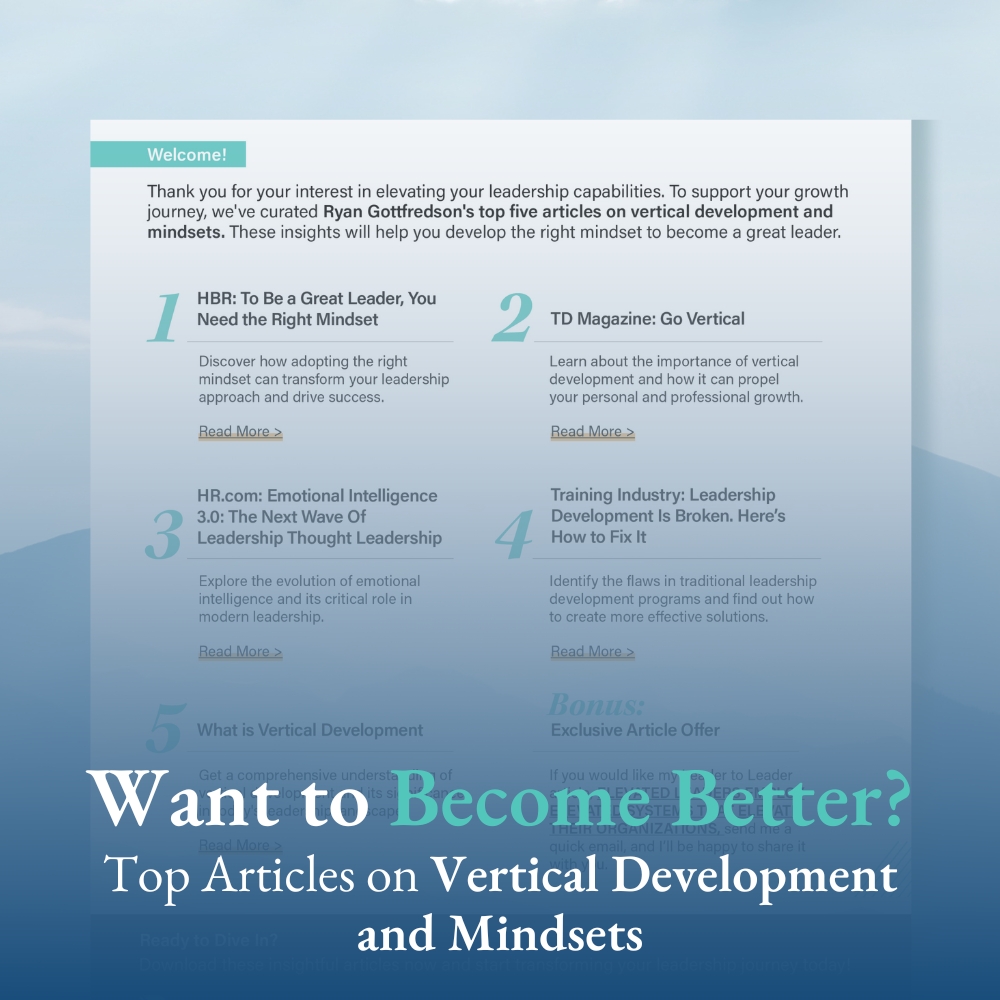Over the next several weeks, I want to share examples of people I have worked or interacted with that are at different stages of their personal vertical development journeys.
The purpose of doing this is to help you:
- Better see what vertical development looks and feels like
- See the value of focusing on your vertical development
- Be inspired, as I have been, by the courage of others who are letting go of who they have been and embracing an elevated version of themselves
First up is Tracy. Tracy is a long-time acquaintance through church. And, I believe her recent vertical development journey can be classified as largely going from Mind 1.0 to Mind 2.0.
Example #1 – Tracy
Tracy is in her 60’s and is an incredibly bright woman and holds a doctorate degree in educational leadership. Toward the tail end of her career, she was a principal and a district coordinator. She retired just before the pandemic.
We have had conversations off and on about vertical development, and recently she pulled me aside and told me that ever since she retired, she has experienced a significant shift in vertical altitude.
Instantly hooking me, I asked her if she would be willing to share what has been going on in her life.
Fortunately for me (and maybe for you too), she was willing to be vulnerable.
Her Awakening
She shared that since she has retired, she has been awakening to two things that she never realized or appreciated before
Being vulnerable, she shared that she has been awakening to two things she never realized or appreciated before.
First, almost everything she did throughout her adult life was driven by an inner need to gain the approval of others. She acknowledged that whenever she did anything, whether it was teaching a class or baking cookies, it had to be perfect. She experienced a lot of anxiety and would go to great lengths to make sure she came across as polished so that she could be seen of value to others.
Second, she did not have a good relationship with herself and deep-down didn’t feel like she was of value, safe, and worthy of belonging. As a result, throughout her adult life, her internal operating system was programed to seek out the approval others in order to feel like she was of value, safe, and worthy of belonging.

She has Been Operating In Mind 1.0
She is just now, in her 60’s, coming to the realization that she had a Mind 1.0 internal operating system. She is awakening to the fact that throughout her life the decisions she made, the anxiety that she felt, and the behaviors she engaged in were the result of self-protective programming. In the moment, this programming felt right and good to her as it not only helped her address her insecurities, but it also led her to do some really good work and receive accolades.
But now, she is beginning to see how this same programming that used to feel right was actually holding her back from being the person she wished she had been and the person she wants to be.
For example, she can now see that when she taught classes as an educator, her internal operating system caused her to be strongly focused on how she was looking and only loosely focused on the students she taught. Awakening to this, she now sees that her internal operating system held her back from being a greater positive influence in the lives of those she taught.
Elevating to Mind 2.0
She is now working on improving her relationship with herself so that she can feel of value without the approval of others. She can see that if she can improve her relationship with herself, she is going to be less anxious and perfectionistic. She can also see that by being less focused on gaining the approval of others, she will be able to become more focused on adding value to others, which will help her better contribute to her children, grandchildren, and her church community.
As an observer of her vertical development, I am inspired by her growth. Right before my eyes, I was seeing someone who was casting off the chains of insecurity and lowering her protective walls. While these chains and walls had been serving a protective purpose throughout her life, they were also keeping her captive and preventing her from being her best self.
Lessons Learned
This example drives home several lessons about vertical development:
- Vertical development can occur at any age.
- It is difficult to vertically develop if we continue to operate in a context that feeds our fears. For Tracy, retiring and stepping away from the “pressure to perform” has helped to create space for her to more deeply investigate her self-protective internal operating system.
- Vertical development almost always involves healing and improving our relationship with ourselves
If you resonate at all with Tracy and/or want additional resources that (1) presents others vertically developing in a similar fashion and (2) provides guidance on how to vertically develop in a similar fashion, here are some books that I recommend:
- Anything Brené Brown, particularly The Gifts of Imperfection
- The Choice and The Gift, both by Edith Eger
- What Happened to You by Bruce Perry and Oprah Winfrey









